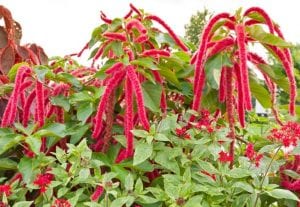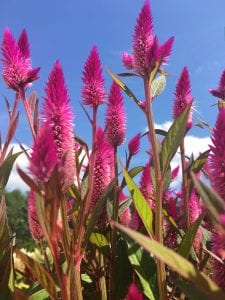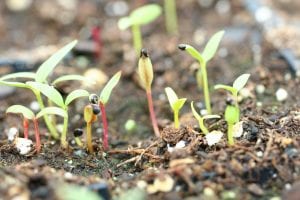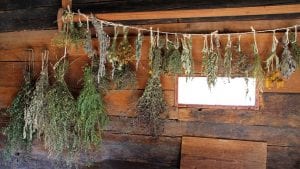by Carole L., Warwick Senior Master Gardener
This article appeared in the April 2019 Issue of Gardening in Orange County. Click here to subscribe!

When looking forward and making plans for showcasing summer’s wild and lively colors, consider adding the versatile annual showstopper Celosia. A member of the Amaranthaceae family, the flower is reminiscent of its cousin, the Amaranth plant, and its more common ornamental variety, “Love Lies Bleeding.”
Celosia comes in assorted colors, shapes, and sizes. There are three common types: plume, cockscomb, and wheat. Their names well describe the shape of each flower.

The plume celosia’s flowers top off the plant with large poofs of color which resemble a flame. The name ‘celosia’ is actually derived from the Greek word ‘kelos,’ which means ‘burned.’ Like a flame, they come in reds, yellows, and oranges. You can plant a border garden in one favorite color, or add all the colors together in a mix guaranteed to make you smile. The plant will continue to flower from June through to the first frost, and simple deadheading will suffice to keep the rainbow aglow.

The cockscomb celosia has a dome shape with curving lines which, not surprisingly, look like the red crest on the head of a rooster. The traditional red-colored flower is used throughout Mexico with the Mexican marigold (Tagetes erecta) in Day of the Dead celebrations. Cockscomb celosias can also be bright yellow. As with the plume celosia, flowering can be extended for months by regular deadheading.

Wheat celosia is slightly more subdued in color than the other two types. The flower is shaped like a spike of wheat, and tends toward shades of pink or white, although there are now some varieties in darker red-purple shades. As an ornamental, its straight, erect height, between 3 and 5 feet tall, makes the wheat celosia a striking addition to any flower garden.
Here are a few more reasons to consider celosias for your summer 2019 garden:
-
- They make good container flowers, especially in an alkaline soil mix. If you are looking for a new “thrill” for your containers’ “fill, thrill, and spill” mix, consider adding some celosias for color or height.
- Celosias are an easy-care flower. For best results, plant them in full sun; they do like heat. As a tropical plant, they are known to tolerate drought, but keeping them moist (not wet) is best. Usually watering 3 or 4 times per week in well-drained soil is ideal.
-

Monarch Butterfly on Celosia FLower All of the celosias will attract bees and other pollinators. Consider planting some near, or mixed in with, your vegetable garden or orchard to help with pollination.
- The leaves, stems, and little flowers are all edible! In parts of Africa, Indonesia, and India, the leaves (especially the tender new leaves) are a green staple. They are a source of protein, Vitamins A and C, iron, calcium, and phosphorus. They are said to have a flavor much like spinach, and a texture like basil. Before the plant flowers, the tender leaves would be a healthy addition for any recipe that includes spinach as an ingredient. It is best to boil the leaves first and toss out the resulting blackish water, as it reportedly contains nitrates and oxalates; then you can use the still-green leaves in your scrambled eggs, soups, or stews. Most recipes add onions, garlic, hot peppers, or even peanut butter to perk up the flavor of the mild celosia leaves.

-
- Since the celosia leaves are best used when tender before flowering, and most store-bought celosias already have flowers, you may want to start your own plants from seeds. If starting indoors, plant 6 to 8 weeks before the last frost date. Cover the tiny seeds lightly (with only 1/8 inch of soil). Keep moist and warm. Germination takes 10 to 15 days. Transplant to your prepared garden bed when the soil is warm. When plants are 4 to 6 inches tall, thin them. You can throw the pulled plants into the cooking pot. Alternatively, you can plant seed directly into the garden when the garden soil is warm. Cover the newly planted seeds with straw to keep moist and prevent washing away in case of heavy rains. Remove the straw once plants emerge.
-

Drying FLowers All types of celosia make beautiful cut flowers and colorful long-lasting dried flowers. To dry, cut flowers when at their peak, remove side leaves to prevent mildew, and hang the flowers upside down in a dark, dry place for several weeks.
Remember to place newspaper underneath the drying plants to catch the seeds that will fall from the flowers once they are dry. Save these seeds for your 2020 celosia garden and be sure to share with your friends!
